Exercises To Burn 500 Calories: 12 Best 30-Minute Workouts
Reach your fitness goals quicker by rejuvenating your usual workout routine.
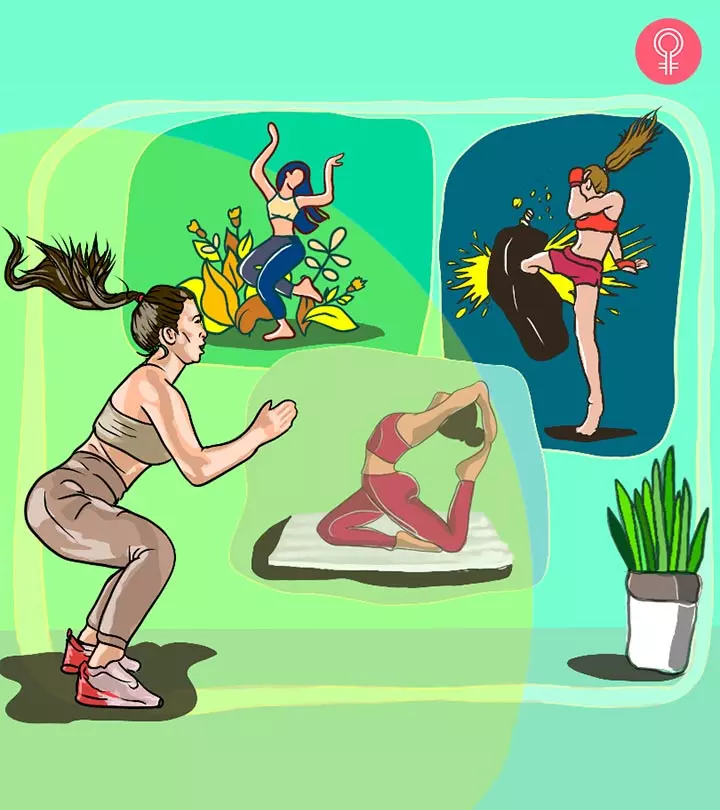
Image: StyleCraze Design Team
How many calories should you burn a day? Is it possible to burn 500 calories a day? Yes, it is! Weight loss has a simple rule. Fewer calories in, more calories out. However, just reducing calorie consumption does not always work (1). That’s why burning 500 calories per day and eating a balanced diet are recommended. This way, women and men can lose up to 6 kg (13 pounds) and 8 kg (17.6 pounds), respectively (2).

Burning 500 calories a day is important for successful weight loss. Science says you need to burn 3500 calories to lose one pound of fat (3). Creating a negative calorie balance aids faster weight loss (4). But what’s the best way to burn 500 calories a day? Exercise! By learning how various exercises help you burn calories, you can choose activities that match your lifestyle and fitness goals. This way, you can create a workout routine that works for you and supports your journey to losing weight effectively. If you are wondering which exercise helps you burn calories fast, here are the 12 best fat-burning exercises you can do for 30 minutes a day to expend 500 calories. Read on!
In This Article
12 Best Exercises To Burn 500 Calories In 30 Minutes
Shavonne Morrison, Registered Dietitian, says, “There are many things you can do to burn 500 calories. Going for a walk can help you burn calories, especially if you keep a good pace. How many calories you’ll burn will vary from person to person, though. A good rule of thumb is to go for a walk for an hour each day, and incorporate strength training a few times a week as well for the best results weight-loss-wise.”
A survey conducted on 1130 US adults found that 24.5% of them exercised 6 times a week and 16.8% of them exercised 8 times a week. It was also observed that only 12.8% exercised 5 times a week and 5.5% exercised 4 times a week.
Here are some of the best workouts you can do to burn 500 calories a day.
1. HIIT (High-Intensity Interval Training)
HIIT or high-intensity interval training is the best form of anaerobic exercise (does not use oxygen but fat as fuel) to burn 500 calories in a short time (5).
In HIIT, quick and high-intensity exercise sets are repeated for a short time to burn fat more effectively than regular cardio exercises. HIIT also creates EPOC (post-exercise oxygen consumption), which means that you will burn fat even after 2 hours of doing the exercises.
Here is an example of a HIIT workout:
- Do 12 squat jumps in 30 seconds.
- Take 10 seconds rest.
- Repeat two more sets.
- Take 10 seconds rest.
- Do 20 high knees in 20 seconds.
- Rest for 10 seconds.
- Repeat two more sets.
An example of HIIT is doing 12 squat jumps at a high intensity, taking 10 seconds rest, and repeating two more sets. Take 10 seconds rest and do 20 high knees at high intensity. Again, rest for 10 seconds and repeat two more sets. Trying HIIT for fat loss is sure to keep your body toned and aid weight loss.
How To Incorporate Into Your Daily Routine?
- Schedule HIIT sessions for 15-30 minutes 3-5 times a week.
- Do it in the morning or during lunch breaks, as it is time-efficient.
- Check fitness apps or YouTube for quick routines.
- If you are a beginner, start with lower-intensity intervals. For instance, work out for 20 seconds and take 40 seconds rest. Also, focus on basic exercises like squats, jumping jacks, and bent knee push-ups.
- Gradually increase the work-to-rest ratio as you get fitter.
2. Zumba/Dancing
Zumba or dancing is a workout that is perfect for people who want to have fun while losing weight.
A study published in the Journal of Sports Science and Medicine found that, on average, participants burned about 9.5 calories per minute in Zumba classes. It mentions that for a typical Zumba class lasting 39 minutes, this adds up to about 369 calories burned (6). This means you would need to participate in a Zumba class for about 53 minutes to burn 500 calories. And if you take longer classes, you can burn even more calories.
With only 1-2 minutes break during the session, you can burn somewhere between 400-500 calories, depending on your weight and intensity. Exercising with other people who are on the same journey will also boost your confidence and keep you on track.
How To Incorporate Into Your Daily Routine?
- Set a specific time each day for a 40-minute Zumba session.
- You can do it either at home watching videos for instructions or join an offline class.
- Use it as a fun way to unwind after work.
- If you are a beginner, start with a slower pace and follow simple routines to build stamina.
3. Kickboxing
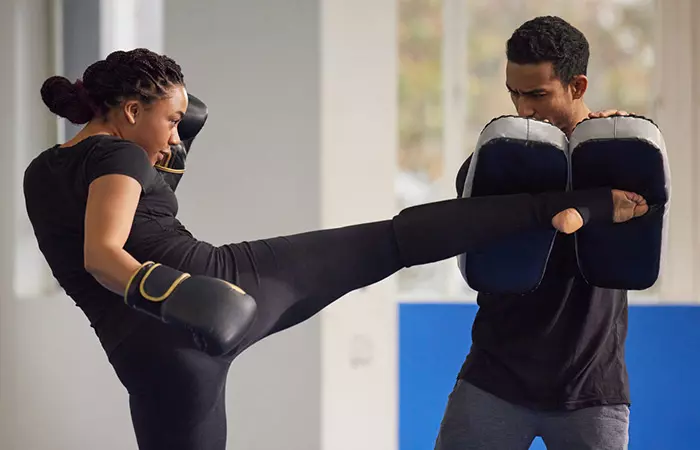
Kickboxing is a combat sport that burns about 400-500 calories in just 30 minutes. It improves physical fitness, stamina, balance, and mobility (7). Find a kickboxing class near you and get fitter.
A study published in the Muscles, Ligaments, and Tendons Journal examined the impact of kickboxing training on physical fitness. Thirty participants, without any prior combat sports training, were divided into a kickboxing group and a control group. Both groups trained for 1 hour, three times a week, over five weeks, however, the control group only followed general fitness exercises paired with some recreational sports. Results showed significant improvements in the kickboxing group’s upper-body power, aerobic and anaerobic fitness, flexibility, speed, and agility. However, there were no changes in body composition or lower-body jump performance for either group (7). This suggests that while kickboxing may effectively enhance various physical fitness components, it may require complementary activities or nutritional support for broader weight loss benefits.
How To Incorporate Into Your Daily Routine?
- Try kickboxing classes or follow any online punching bag routine.
- You can fit in a session early in the morning or in the evening to de-stress.
- If you are a beginner, focus on basic punches like jab and cross and kicks.
- You may also reduce intensity by taking longer rest breaks between sets. As you build strength, add intensity with more rounds, faster punches, and short breaks.
4. Swimming
Swimming is an excellent fat-burning and full-body toning physical activity, minus the sweat! It is one of the only exercises that combines both cardio and strength training. It is projected to not only burn about 500 calories per hour but also provides a full-body workout and boosts your heart and lung health at the same time (8).
If you weigh 130 pounds, swimming (freestyle) at a fast pace for 30 minutes will burn around 445 calories. Try various strokes, and you will get in shape in no time.
How To Incorporate Into Your Daily Routine?
- Aim to achieve 30-45 minutes of swimming 2-3 times a week.
- Swim during breaks or after work for added relaxation.
- If you are a beginner, start with 10-20 minutes of swimming at a relaxed pace. Focus on technique and build endurance gradually.
- If you get tired, take short breaks between laps.
5. Running/Sand Running
Running and sand running are two effective aerobic or cardio exercises for the entire body.
They burn more than 500 calories, depending on your body weight, distance, speed, and time. If you weigh 120 pounds and run at 12 mph, you will burn around 545 calories in 30 minutes.
A study published in The Journal of Strength and Conditioning Research compared the calories burned during running and walking. It was found that walking at a slower pace (86 meters per minute) burned about 373 KJ while running at a faster pace (160 meters per minute) burned about 471 KJ. Including the extra calories burned after exercise, the total calories burned were 463 kilojoules for walking and 664 KJ for running (9).
Sand running adds resistance to normal running. Research suggests that it demands 1.15 times more effort and 1.6 times more energy than running on a hard surface (10). This makes this exercise more effective for burning calories quickly. It also helps fat loss from the legs and tone the lower body. Run barefoot on a clean beach to make all the small muscles work, prevent injuries, and strengthen the leg muscles
If you are looking for effective cardio exercises for weight loss, start with interval running. Here is what you can do:
- Jog at 8 mph for a minute
- Sprint at 12-14 mph for 10 seconds
- Repeat for 30 minutes
- Take two 30-second breaks and walk at 6 mph
How To Incorporate Into Your Daily Routine?
- If running on sand, start with shorter distances to avoid overexertion.
- Fit in a 20-40 minute run in the early morning or evening.
- If you are near a beach, aim to run on sand for a more challenging workout.
- If you are a beginner, start by walking or jogging for 10-15 minutes instead of running.
6. Weight Training
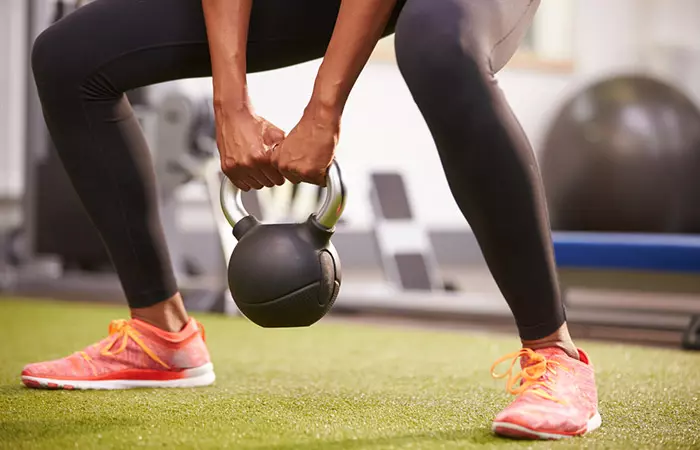
Lifting weights or strength training is essential for building lean muscle and burning 500 calories a day. Use equipment like dumbbells, barbells, Swiss balls, medicine balls, kettlebells, resistance bands, pull-up bars, etc. to get your muscles fibers to work. Do cardio and weight training on alternate days to get a fit and slim body.
A study published in the PLOS One journal examined the energy burned during eight popular resistance exercises at different intensity levels. It found that calories burned increased as exercise intensity rose. Also, exercises targeting the lower body, like the half squat and leg press, required more energy than upper body exercises, such as the bench press and biceps curl. At high intensity (80% of maximum weight), leg exercises helped burn more than 20 calories per minute, while upper body exercises could burn fewer than 20 calories. Overall, lower-body exercises were more energy-demanding than upper-body ones and helped burn more calories (11).
How To Incorporate Into Your Daily Routine?
- If you are a beginner, use lighter weights or resistance bands and focus on your form. Gradually increase weights as strength improves.
- Incorporate weight training into your routine 2-4 times a week.
- You can split train muscle groups by exercising the upper body one day and the lower body the next.
- If you cannot go to the gym, consider getting home equipment, like dumbbells.
 Trivia
Trivia7. Rope Jumping
Jumping rope or skipping is a great warm-up exercise. When you practice high-intensity rope jumps for 30 minutes, you can burn up to 500 calories. Wear proper shoes and land softly to prevent knee injuries. Take two 60-second breaks during the session.
A study published in The Journal of Strength and Conditioning Research looked at how much effort and energy is used during a 10-minute rope training session. Eleven active participants did the exercise, swinging a rope with both arms for 15 seconds, followed by 45 seconds of rest. They repeated the exercise 10 times. The results showed that during the workout, participants had high heart rates and burned a lot of energy. The study concluded that rope training is an effective exercise for improving heart and lung fitness because it gets the heart rate up and uses a lot of energy (13).
Merve Yilmaz, a blogger, shares her fruitful experience with rope jumping in her blog. She writes, “Throughout the challenge, I was able to lose 1.5 kilograms (3.3 pounds) and slim down my waist by 3 cm (1.2 inches). My thighs also slimmed down by 2 cm (0.8 inches) and my calves by 1 cm (0.4 inches). The 7-day jump rope challenge not only helped me achieve physical results but also left me feeling energized and positive (i).”
How To Incorporate Into Your Daily Routine?
- Use rope jumping as a quick and effective cardio workout at least for 15 minutes once a day.
- You can also try jumping for 2-5 minutes as part of a warm-up.
- If you are a beginner, start with 30 seconds of jumping rope and 1 minute of rest.
- If jumping rope is too challenging, try practicing the action without the rope.
 Quick Tip
Quick Tip8. Body Weight Workouts
Body weight exercises are like lifting weights without weights! You don’t need any equipment to burn 500 calories in 30 minutes – just your body’s weight. Exercises like jump squats, plank toe taps, crawling, push-ups, mountain climbers, spider climbers, burpees, high knees, jumping crossbody leg kicks, leg drops, crunches, jumping lunges, skater lunges, etc. are amazing calorie burners.
A study published in the Journal Of Strength And Conditioning Research aimed to figure out how many calories are burned during bodyweight exercises like heel raises, squats, and push-ups at different speeds. Researchers tested 15 young men aged 21-29 to see how their energy use changed as they did these exercises faster or slower. The results showed that push-ups burned the most energy, followed by squats, and heel-raises burned the least. For example, when doing push-ups, a person burns around 6.3 kcal per minute at 10 repetitions per minute, while squats burn 2.7 kcal, and heel raises burn just 0.9 kcal. This suggests that calories burned may vary as per different exercises and speeds (14).
How To Incorporate Into Your Daily Routine?
- Add bodyweight exercises like squats, push-ups, and planks into your routine 3-4 times a week.
- These exercises can be done anywhere and at any time. So, try them in the morning or evening at home or the park or during breaks at work.
- If you are a beginner, focus on low-impact versions of bodyweight exercises like wall knee push-ups and assisted squats. Gradually progress to more advanced variations like full push-ups.
9. Exercise Bike/Cycling
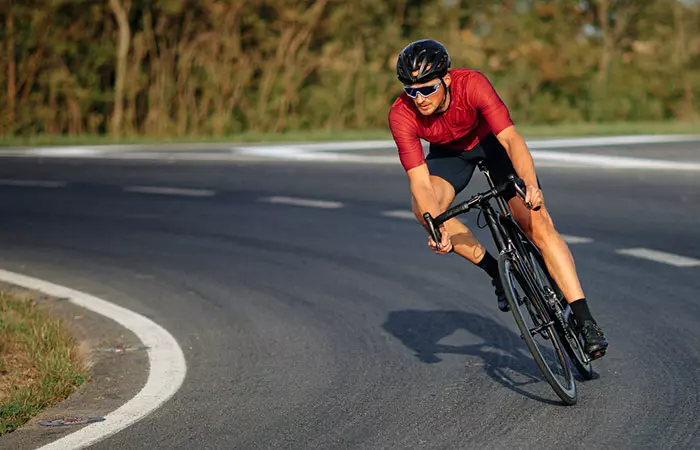
Whether outdoors or indoors, bicycling is a great way to burn 500 calories in 30 minutes. Fast biking at 14-15 mph for 30 minutes can help burn 460 calories in 30 minutes. However, if your endurance is not at that level, you may take three sets of 60 seconds break and catch your breath. Over the course of two weeks, your endurance will start improving, and you will start burning more calories.
A study published in the British Journal of Sports Medicine looked at how cycling to work affects physical activity and whether it meets the exercise guidelines for improving health and fitness. Eighteen middle-aged, untrained participants cycled to work at least three times a week for 12 weeks. Their heart rate, oxygen use, and energy expenditure were measured twice, once in a test before the 12 weeks and once after. On average, they burned 220 calories for a distance of 2 km each time, totaling 1539 calories per week. Men burned more calories per hour than women. Both genders showed an improvement in physical fitness (15).
How To Incorporate Into Your Daily Routine?
- If you have a stationary bike, aim to workout for 20-40 minutes, 3-4 times a week.
- For outdoor cycling, go on a 30-minute ride on weekends. You can even make it a fun family activity.
- If possible, you can also ride a bicycle to work.
- If you are a beginner, start with 10-20 minutes of stationary bike at a moderate pace. Focus on form and consistency, and gradually increase your time as your endurance builds.
- If you are cycling outdoors, start with shorter rides of 20-30 minutes and build up to longer sessions.
10. Rowing
Research suggests that rowing helps burn 36 kcal per minute (16). You would need to row for approximately 14-15 minutes to burn approximately 500 calories, depending on your intensity and speed.
Get a water rowing machine at home or row at the gym. It will help you burn 500 calories and also tone your upper back, shoulders, chest, and arms. It also offers a host of benefits.
How To Incorporate Into Your Daily Routine?
- Start with 15-20 minute sessions 3 times a week.
- You can row before or after other exercises as a part of a workout routine.
- If you are a beginner, start with 10-minute rowing sessions at a relaxed pace. Focus on learning proper form before increasing time.
11. Outdoor Sports
Participating in outdoor sporting activities can help you easily burn calories while having a lot of fun. Football players typically cover a total distance of 10–11 km during a match, resulting in an energy expenditure of about 1500 kcal due to the physical demands of active play (17). Similarly, basketball requires physical movements like running, jumping, and quick direction changes that may help burn between 630 and 750 calories per hour (18). Badminton players also burn about 11.2 kcal per minute (19). This means that a 45-minute session of badminton may help you burn around 500 calories.
Skiing, ice skating, football, basketball, and racquet sports like badminton and tennis are amazing outdoor sports you can bank on to burn 500 calories in 30 minutes. The serotonini A chemical messenger that plays a key role in boosting mood and regulating healthy eating and sleeping patterns. and adrenalinei A hormone produced by the adrenal glands that prepares your body to fight or flee from perceived danger. rush also helps improve memory, reduce stress, and induce better sleep (20).
How To Incorporate Into Your Daily Routine?
- Include sports like tennis, badminton, football, or volleyball to your weekend routine.
- Make it a weekly goal to participate in at least one sport for 45-60 minutes.
- If you are a beginner, start with less intense activities like frisbee or casual tennis. Gradually move to more vigorous sports like football and basketball.
12. Running Up The Stairs
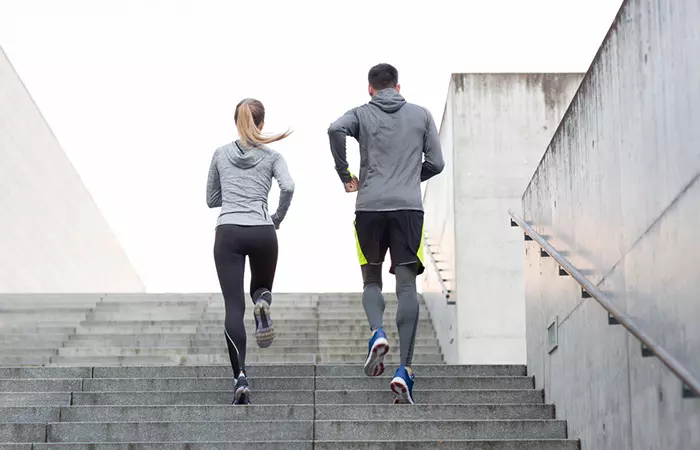
Running up the stairs is a fat-burning, leg-toning exercise that you cannot ignore if you want to burn 500 calories in just 30 minutes. Running up the stairs helps pump more oxygen and works the lungs, heart, muscles, and bones. You sweat and shed the fat away. It also improves your balance and coordination.
Research suggests that climbing stairs burns around 8.5 calories per minute when you take one step at a time. If you take two steps at once, the calorie burn increases slightly to about 9.2 calories per minute. This shows that taking two steps uses a bit more energy. So, to burn 500 calories, it would take you about 58.82 minutes if you climb one step at a time, or about 54.35 minutes if you take two steps at once (21). Further, when you run instead of simply climbing, you need more energy. So, you may end up burning more calories.
How To Incorporate Into Your Daily Routine?
- Run up the stairs wherever possible, be it at home or work.
- Do 3-5 sets of 1-2 minutes.
- You can also challenge yourself with a daily stair workout after work.
- If you are a beginner, start by walking up the stairs at a slow pace for 5-10 minutes. If you are comfortable, alternate between walking and running for short intervals.
According to Shavonne Morrison, Registered Dietitian, “The easiest way to burn extra calories is by staying active throughout the day. Take the stairs at work instead of the elevator, or go for a walk in the morning and evening or on your lunch break.”
Note: For all the workouts mentioned above, it is important to note that specific variables can influence the actual number of calories burned. These factors include the intensity level of the exercise, the duration, your body weight, age, gender, fitness level, etc. Therefore, the estimated calorie burn may vary from person to person.
These are the 12 best exercises you can do to burn 500 calories a day in 30 minutes. But is it enough for losing weight? Find out in the next section.
Key Takeaways
- To burn 500 calories in 30 minutes, you can perform high-intensity cardio exercises, such as running, rope jumping, and kickboxing.
- Incorporating strength training exercises, such as weightlifting and body weight exercises can help burn calories.
- Participating in physical activities, such as zumba and swimming or sports, such as basketball and football can increase calorie burn.
- Consultation with a doctor is advised before drastic changes in one’s exercise regimen.
Is Burning 500 Calories A Day Enough To Lose Weight?
Yes, burning 500 calories per day is good for reasonable weight loss per week. If you want to lose a pound of fat, you need to burn 3500 calories. If you burn 500 calories per day, by the end of the week, you will burn 3500 calories, which means you will lose a pound of fat.
Shavonne Morrison, Registered Dietitian, says, “If you want to lose weight, you need to create a caloric deficit. One way to do this is by burning or reducing your calorie intake. One popular theory suggests doing this by creating a caloric deficit of about 500 calories each day. The idea with this is that by burning or decreasing your calorie intake by 500 calories a day, you can burn about 1-2 lbs per week. This is based on the fact that one pound of body fat is approximately equal to 3,500 calories, so 500 calories x 7 days = 3,500 calories burned = 1 lb fat burned.”
You are probably wondering, “How much weight will I lose in a month?” Following the right nutrition plan and taking proper rest can help you lose more than 5 pounds in a month. Remember, gradual weight loss is always better than following fad diets and workout routines that cause long-term injury. So, you should always avoid some common mistakes while performing the workout options mentioned above. Check them out in the next section.
Common Mistakes To Avoid
Here are some common mistakes you should avoid before performing the above-mentioned workouts to burn 500 calories a day:
- Never skip your warm-up routine, as it prepares your body for the demands of exercise and reduces the risk of injury (22).
- Avoid doing exercises or any physical activity in an incorrect form, as it may lead to joint strain and injuries.
- Avoid pushing yourself too hard, as it may cause overtraining and lead to injury, fatigue, or burnout.
- Always finish your workout with a cool down routine to prevent muscle cramps and soreness and promote recovery (23).
- Inconsistent workouts can delay progress and make it harder to establish habits. So, always make a workout plan and stick to it. Aim for a balanced schedule that includes a mix of exercises throughout the week.
- Also, set achievable goals, as unrealistic expectations can lead to frustration and discouragement.
Here’s a list of other activities you can do to burn calories.
Other Fun Ways To Lose Calories
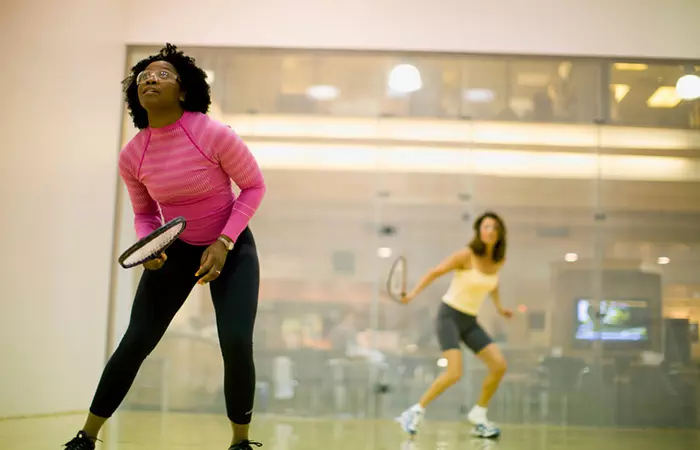
- Do gardening, be it in your backyard or someone else’s. Gardening can be quite tiring, and it will earn brownie points with your friends and family.
- Clean the house. You may listen to your favorite music to keep you engaged and entertained.
- Convince a friend to play racquetball with you every day for 45 minutes.
- Learn to play an instrument. There is enough mental and physical strain to burn plenty of calories.
- Laugh! Yes, laughing also burns calories. Research suggests that laughing for just 10-15 minutes a day can burn between 2-10 kcal (24). It may not be a huge amount, but it is still a little extra energy burned.
These different ways to burn calories can help you meet your fitness goals with ease. But there are a few tips that will make it easier to burn calories. Keep reading to learn more.
Tips For Maximizing Caloric Burn
- Know your body and understand how your weight and age affect your calorie burn. If you are heavier or younger, you might burn calories more efficiently. Use this knowledge to adjust your workout intensity to match your personal goals and maximize your caloric burn.
- Combine different types of exercises, like cardio, strength training, and flexibility workouts, to keep things interesting so that you are not tempted to skip a day here and there.
- Try to push yourself a little harder during workouts, whether it is by running faster or lifting heavier weights.
- Alternate between high-intensity bursts and lower-intensity recovery periods to boost calorie burn.
- Look for opportunities to move more throughout the day, like taking the stairs instead of the elevator or going for short walks.
- Aim for specific fitness goals, like a certain number of steps each day or a target workout duration, to keep yourself motivated.
- Drink plenty of water before, during, and after exercise to help maintain your energy levels.
- Ensure you are well-rested, as sleep plays a vital role in your metabolism and overall energy levels (25).
These tips can help you burn your calories more efficiently. But how does one keep track of all of them? Find out in the next section.
Tips To Track Calories Burned In A Day
- Use fitness tracking devices or an app to monitor your daily physical activity and estimate calorie expenditure based on your total steps and physical activity.
- Use a heart rate monitoring watch or device to track your energy expenditure.
- You can track your food intake and exercise duration on calorie-tracking mobile apps to get an estimate of your daily calorie expenditure.
- Keep a diary of your daily activities and workouts and use online resources to estimate calorie burn for each activity.
- Refer to a MET values chart. The metabolic equivalent of task (MET) values are based on your body weight and show how many calories you burn doing specific activities.
Infographic: Fun Ways To Burn 500 Calories
Slow and steady steps help you lose those stubborn pounds. But if the idea of hitting the gym does not appeal to you, you would be pleased to know that there are plenty of other fun and interesting ways to burn calories.
Check out the infographic below to find out which intensive energy expenditure activities you can engage in to burn 500 calories! Illustration: StyleCraze Design Team
You can easily burn 500 calories a day. All you need to do is exercise for 30 minutes every day. All the workouts listed above, from HIIT and aerobics to cycling and rope jumping, help you burn 500 calories a day effectively. However, do not just do the same exercise every day. Instead, switch them up, and you will be able to lose about 3,500 calories in a week, which is enough to lose a pound of fat. However, burning these many calories will be of no use if you do not follow a calorie deficit diet for a healthy metabolism. So, aim for a negative calorie balance for effective results.
Frequently Asked Questions
What is the fastest way to burn calories?
HIIT is one of the most effective exercises to burn calories fast. High-intensity interval exercises not only burn calories as you exercise but also 2 hours after you have left the gym. With HIIT, you do more in a short period, and it helps you maintain a healthy body composition by helping you lose fat as well as retain muscle tone.
Is a 500-calorie workout good?
Yes, a 500-calorie workout is good. Make sure you eat a banana or have a smoothie 1 hour before exercise. Keep a bottle of homemade electrolytei Electrically charged minerals that play a key role in balancing the water and pH levels in the body. water handy to keep yourself hydrated.
How much weight will I lose by burning 500 Calories in a week?
You will lose about 1 pound or more if you burn 500 Calories in a week. Consume healthy superfoods and follow a healthy lifestyle.
How many jumping jacks will burn 500 Calories?
Jumping jacks is not a very effective exercise to burn 500 calories. Sure, it is a good warm-up exercise. But to burn 500 calories, you have to do HIIT, kickboxing, swimming, play outdoor sports, etc. If you want to do jumping jacks, probably try 1000 jumping jacks!
What physical activities burn 500 calories a day?
To burn 500 calories a day, you have to do more than just reach your target of 10,000 steps a day. Do any of these exercises – running, HIIT, swimming, or Zumba or play outdoor sports. Along with these, you must also aim to remain active throughout the day, like taking the stairs, walking to work or school, and using a standing desk when you are tired of sitting.
How to lose 1 pound in a day?
Losing 1 pound in a day is harmful to your health and may cause muscle loss and lead to compromised immunity. Here’s a detailed post if you still want to lose 1 pound in a day.
How much walking will burn 500 calories?
It is estimated that a 180-pound man can burn 500 calories in a day by walking for 5 miles at a speed of 2.5 mph (26).
How long will it take to burn 500 calories on a treadmill?
It is estimated that jogging or brisk walking at a speed of 4 mph between 35 to 50 minutes will burn 500 calories per day.
Burning 500 calories doesn’t have to be boring! You can make it fun by checking out this video to learn different ways to get your heart rate up and burn those calories!
Personal Experience: Source
StyleCraze's articles are interwoven with authentic personal narratives that provide depth and resonance to our content. Below are the sources of the personal accounts referenced in this article.
i. I Jumped Rope for 7 Days and This is What Happenedhttps://mrvyilmaz.medium.com/i-jumped-rope-for-7-days-and-this-is-what-happened-af56c07b0df7
References
Articles on StyleCraze are backed by verified information from peer-reviewed and academic research papers, reputed organizations, research institutions, and medical associations to ensure accuracy and relevance. Read our editorial policy to learn more.
- Reducing Calorie Intake May Not Help You Lose Body Weight Perspective on Psychological Science Association for Psychological Sciences US National Library of Medicine National Institutes of Health.
https://www.ncbi.nlm.nih.gov/pmc/articles/PMC5639963/pdf/10.1177_1745691617690878.pdf - Diet Versus Exercise in Weight Loss and Maintenance: Focus on Tryptophan International Journal of Tryptophan Research US National Library of Medicine National Institutes of Health.
https://www.ncbi.nlm.nih.gov/pmc/articles/PMC4864009/pdf/ijtr-9-2016-009.pdf - What is the Required Energy Deficit per unit Weight Loss? International Journal of Obesity US National Library of Medicine National Institutes of Health.
https://www.ncbi.nlm.nih.gov/pmc/articles/PMC2376744/pdf/nihms-47767.pdf - Calories Energy Balance And Chronic Diseases Eat for Life: The Food and Nutrition Board’s Guide to Reducing Your Risk of Chronic Disease US National Library of Medicine National Institutes of Health.
https://www.ncbi.nlm.nih.gov/books/NBK235013/ - High-Intensity Intermittent Exercise and Fat Loss Journal of Obesity US National Library of Medicine National Institutes of Health.
https://www.ncbi.nlm.nih.gov/pmc/articles/PMC2991639/pdf/JOBES2011-868305.pdf - Zumba®: Is the “Fitness-Party” a Good Workout? US National Library of Medicine National Institutes of Health.
https://pmc.ncbi.nlm.nih.gov/articles/PMC3737860/ - The effects of five weeks of kickboxing training on physical fitness Muscles Ligaments and Tendons Journal US National Library of Medicine National Institutes of Health.
https://pmc.ncbi.nlm.nih.gov/articles/PMC4187584/ - Viewpoint: Swimming US National Library of Medicine National Institutes of Health.
https://pmc.ncbi.nlm.nih.gov/articles/PMC6002002/ - Energy expenditure comparison between walking and running in average fitness individuals US National Library of Medicine National Institutes of Health.
https://pubmed.ncbi.nlm.nih.gov/22446673/ - Mechanics and energetics of human locomotion on sand US National Library of Medicine National Institutes of Health.
https://pubmed.ncbi.nlm.nih.gov/9622579/ - Energy cost of isolated resistance exercises across low- to high-intensities US National Library of Medicine National Institutes of Health.
https://pmc.ncbi.nlm.nih.gov/articles/PMC5524349/ - Effect of sand versus grass training surfaces during an 8-week pre-season conditioning programme in team sport athletes US National Library of Medicine National Institutes of Health.
https://pubmed.ncbi.nlm.nih.gov/24479768/ - Metabolic cost of rope training US National Library of Medicine National Institutes of Health.
https://pubmed.ncbi.nlm.nih.gov/23897017/ - Estimating Energy Cost of Body Weight Resistance Exercise Using a Multistage Exercise Test US National Library of Medicine National Institutes of Health.
https://pubmed.ncbi.nlm.nih.gov/32379233/ - Determining the intensity and energy expenditure during commuter cycling US National Library of Medicine National Institutes of Health.
https://pmc.ncbi.nlm.nih.gov/articles/PMC2465142/ - Applied physiology of rowing US National Library of Medicine National Institutes of Health.
https://pubmed.ncbi.nlm.nih.gov/6390606/ - Metabolic Limitations of Performance and Fatigue in Football US National Library of Medicine National Institutes of Health.
https://pmc.ncbi.nlm.nih.gov/articles/PMC3426724/ - Individual characteristics of physical and mental development and their connection with regular physical exercises when playing basketball US National Library of Medicine National Institutes of Health.
https://pmc.ncbi.nlm.nih.gov/articles/PMC9461444/ - Notational Analysis and Physiological and Metabolic Responses of Male Junior Badminton Match Play US National Library of Medicine National Institutes of Health.
https://pmc.ncbi.nlm.nih.gov/articles/PMC9961854/ - Sporting Mind: The Interplay of Physical Activity and Psychological Health US National Library of Medicine National Institutes of Health.
https://pmc.ncbi.nlm.nih.gov/articles/PMC10819297/ - The Energy Expenditure of Stair Climbing One Step and Two Steps at a Time: Estimations from Measures of Heart Rate US National Library of Medicine National Institutes of Health.
https://pmc.ncbi.nlm.nih.gov/articles/PMC3520986/ - The effect of warm-ups with stretching on the isokinetic moments of collegiate men US National Library of Medicine National Institutes of Health.
https://pmc.ncbi.nlm.nih.gov/articles/PMC5833972/ - Effects of Cool-Down Exercise and Cold-Water Immersion Therapy on Basic Fitness and Sport-Specific Skills among Korean College Soccer Players US National Library of Medicine National Institutes of Health.
https://pmc.ncbi.nlm.nih.gov/articles/PMC8826325/ - Energy expenditure of genuine laughter US National Library of Medicine National Institutes of Health.
https://pubmed.ncbi.nlm.nih.gov/16652129/ - Sleep and metabolic function US National Library of Medicine National Institutes of Health.
https://pmc.ncbi.nlm.nih.gov/articles/PMC3289068/ - Time to Correctly Predict the Amount of Weight Loss with Dieting Journal of the Academy of Nutrition and Dietetics US National Library of Medicine National Institutes of Health.
https://www.ncbi.nlm.nih.gov/pmc/articles/PMC4035446/
Read full bio of Madhu Sharma
- Shavonne Morrison, MS, RD, LD, is a registered and licensed dietitian. She has a master’s degree in Nutrition Sciences from Texas Tech University and is passionate about helping women live their healthiest lives minus the stress.
 Shavonne Morrison, MS, RD, LD, is a registered and licensed dietitian. She has a master’s degree in Nutrition Sciences from Texas Tech University and is passionate about helping women live their healthiest lives minus the stress.
Shavonne Morrison, MS, RD, LD, is a registered and licensed dietitian. She has a master’s degree in Nutrition Sciences from Texas Tech University and is passionate about helping women live their healthiest lives minus the stress.
Read full bio of Arshiya Syeda
Read full bio of Payal Karnik






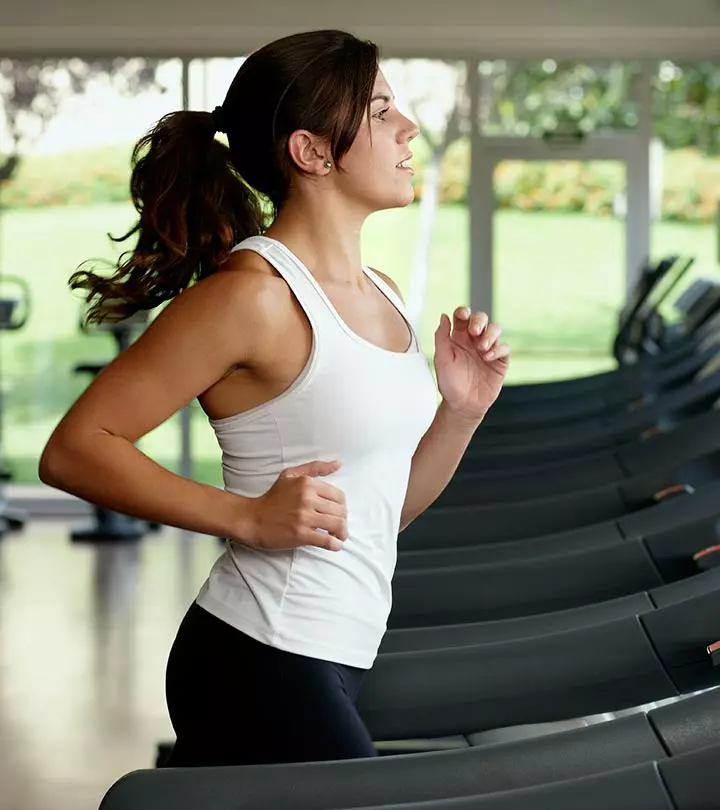

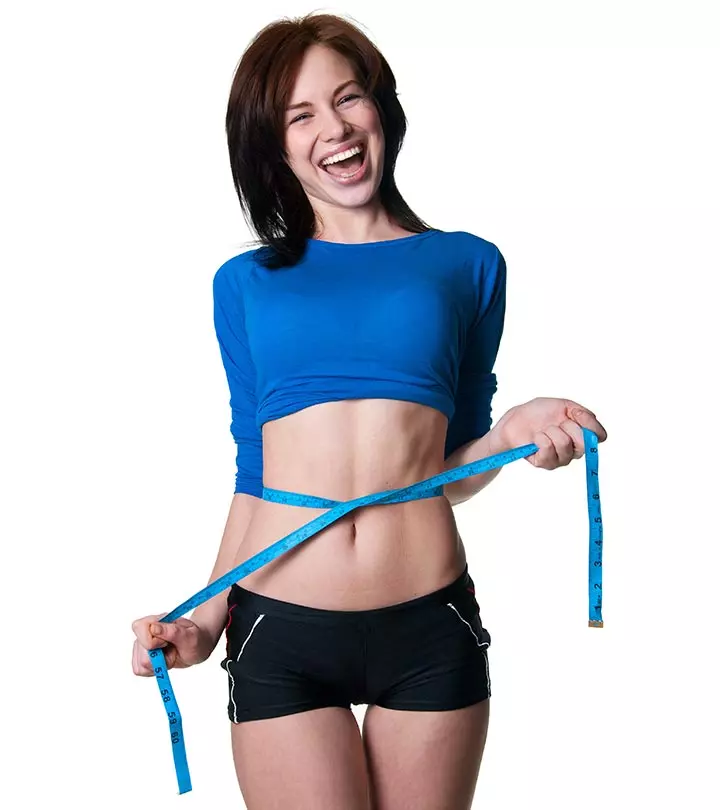
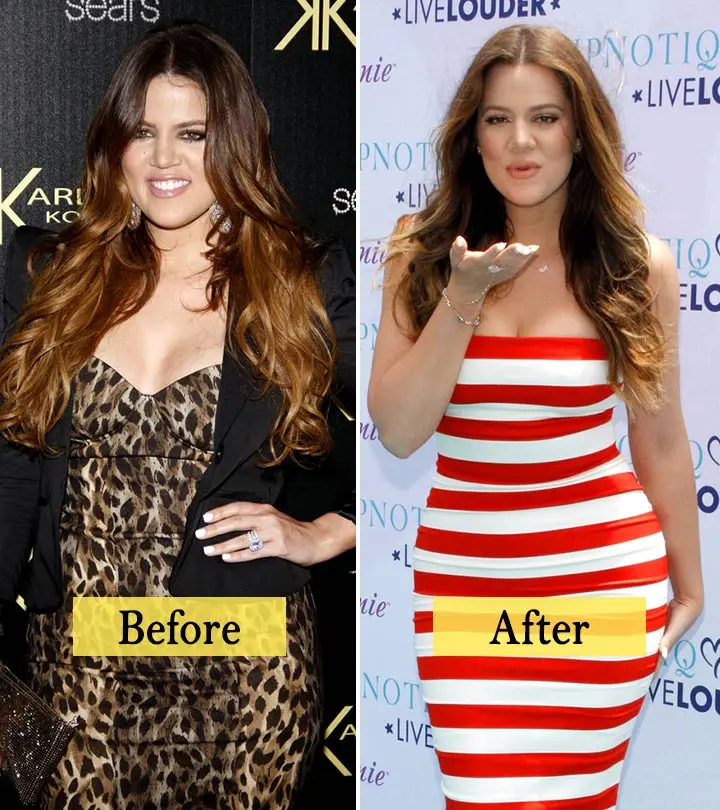



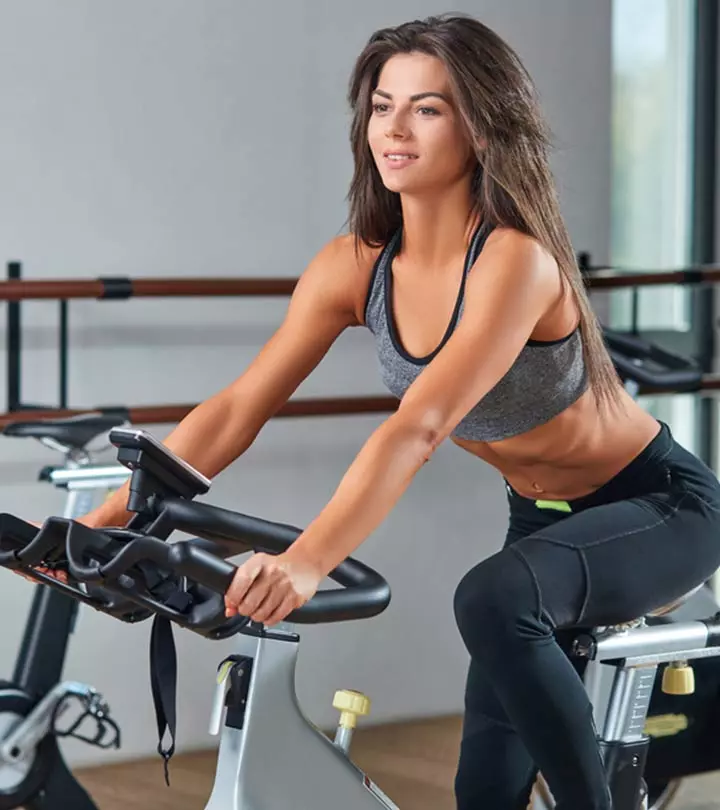
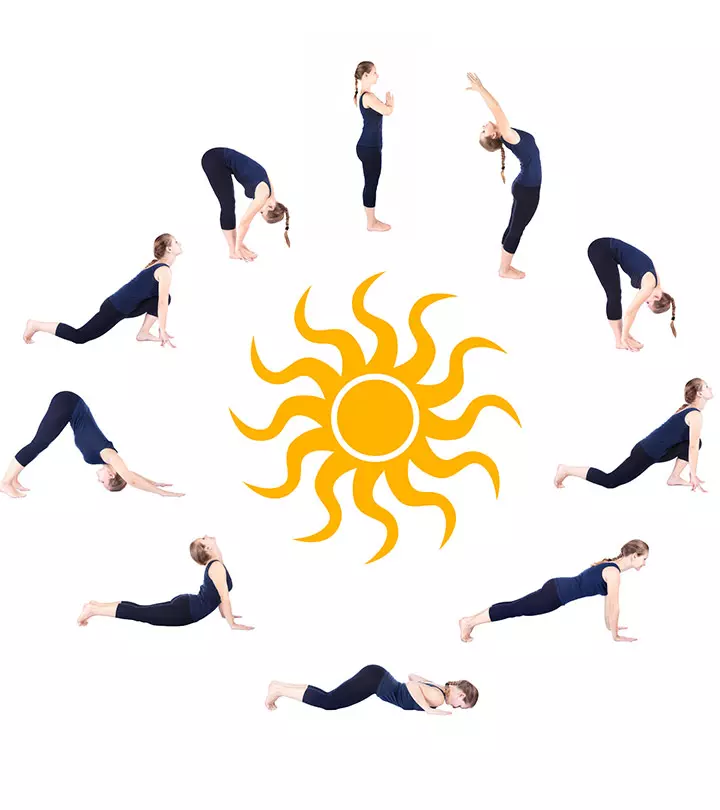
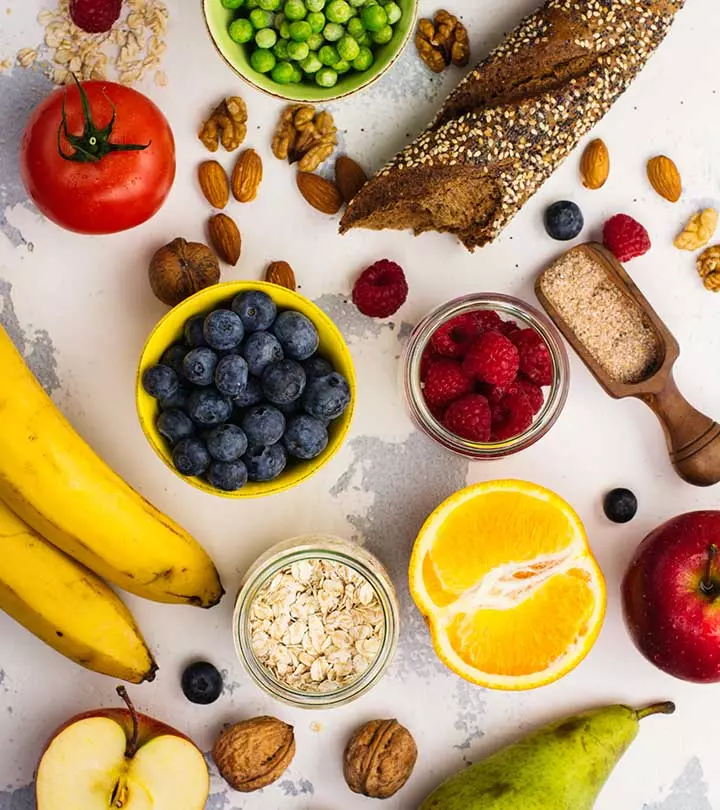



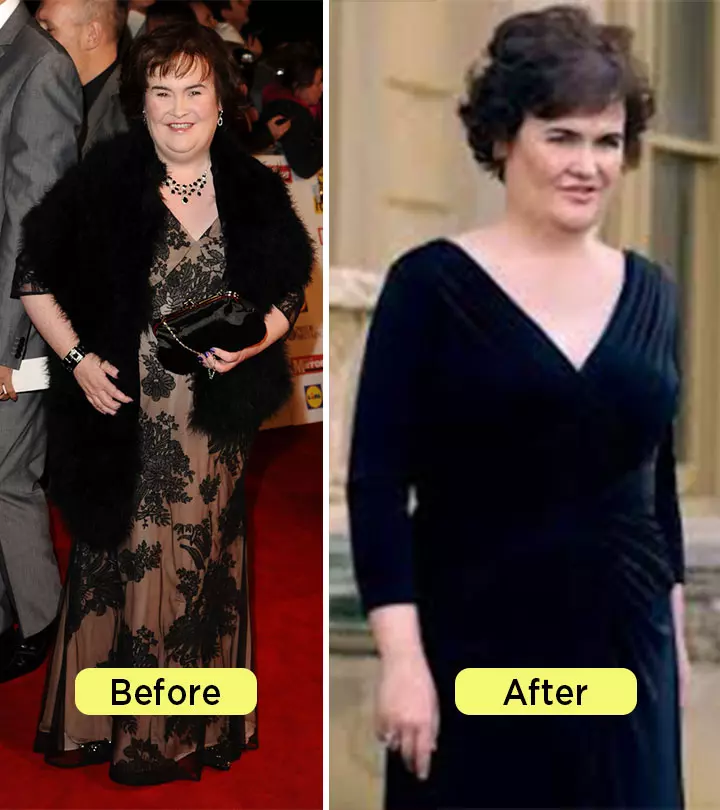
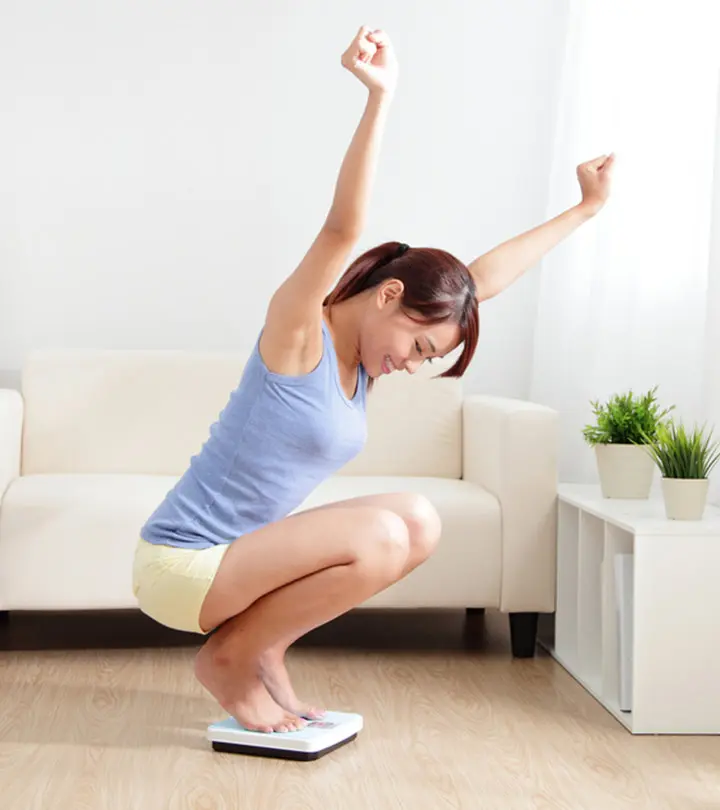
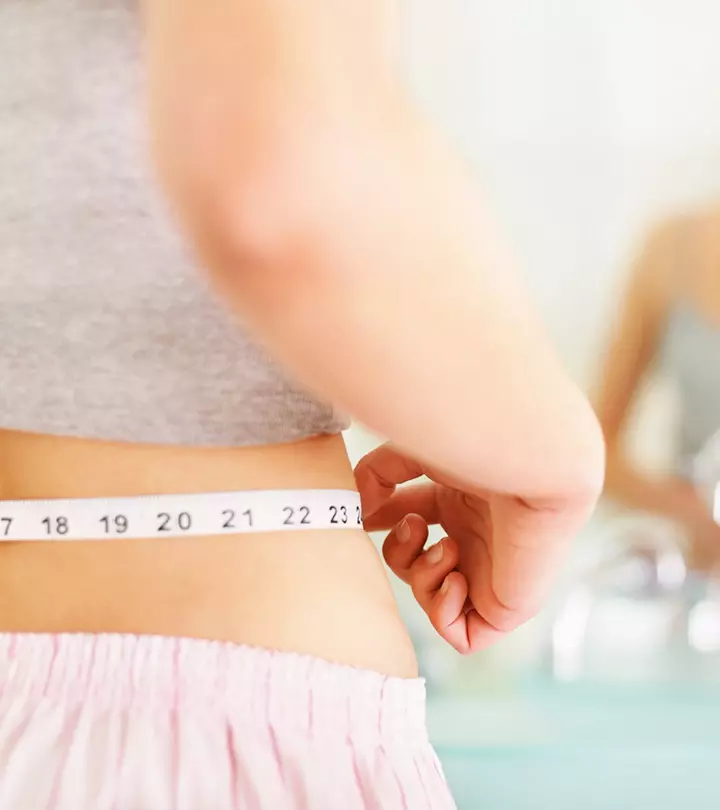

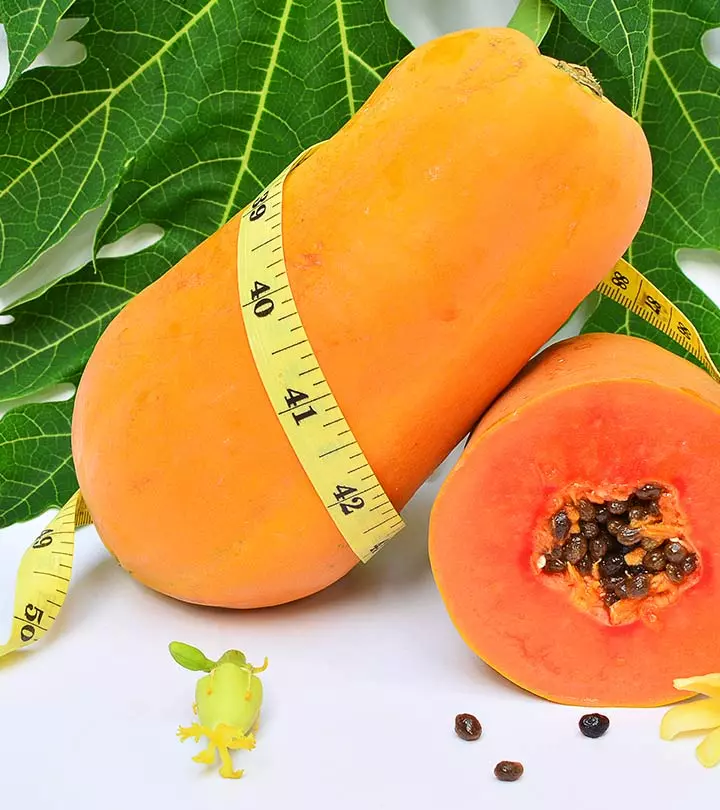



Community Experiences
Join the conversation and become a part of our empowering community! Share your stories, experiences, and insights to connect with other beauty, lifestyle, and health enthusiasts.